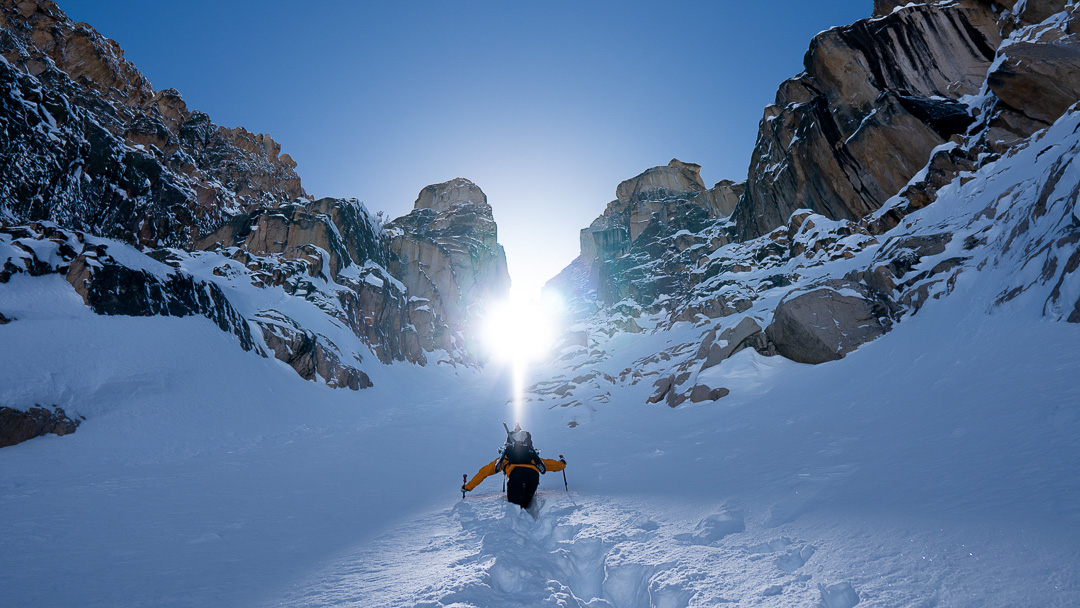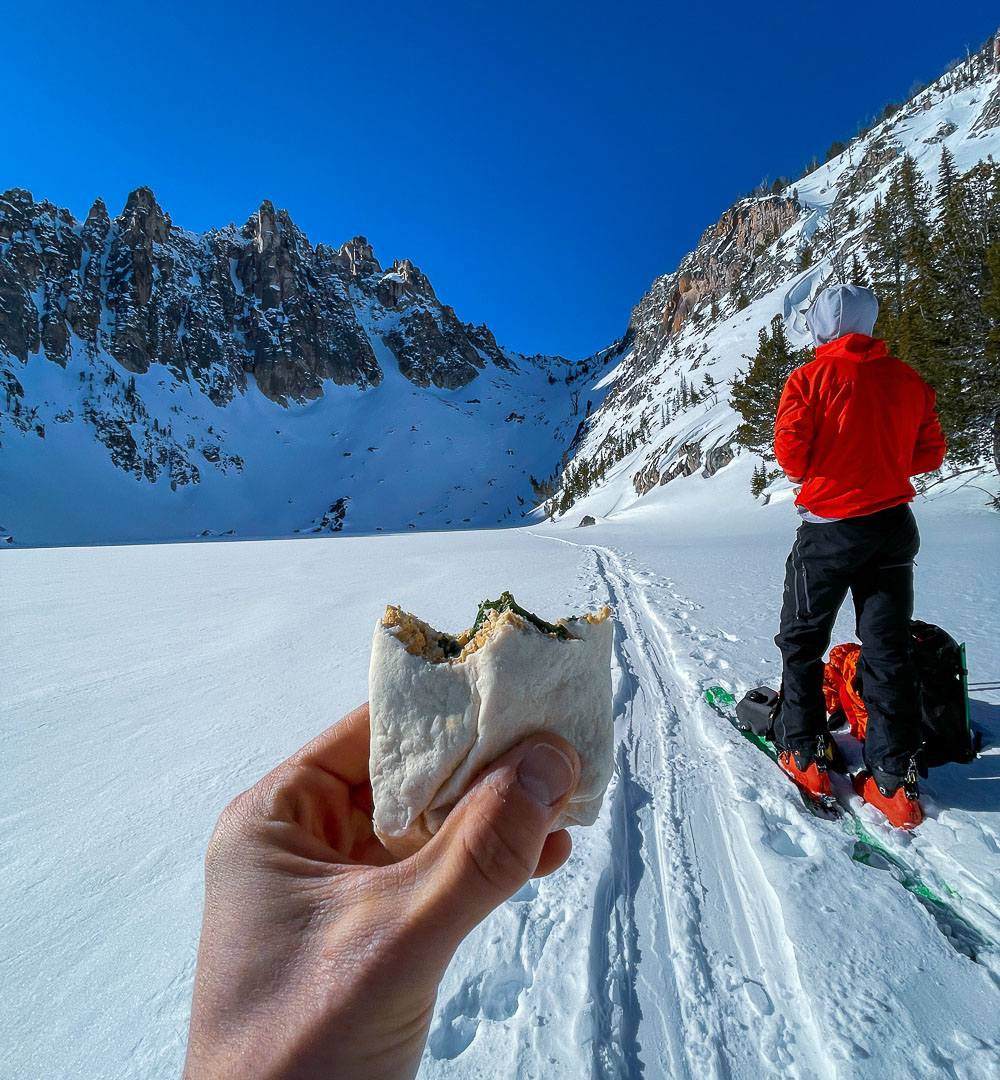Whether you casually or intensely backcountry ski, it is a highly demanding sport. While the touring culture promotes excellence in performance and safety, nutrition considerations are often ignored. As a performance nutritionist and ski coach, I’m keen to educate the community to optimally fuel our time in the skintrack to better equip us for the performance and safety demands.
Now that the snow is finally falling here in the West, it’s time to dust off the skis, put some fresh batteries in our avalanche beacons, and get amped for powder turns and lofty objectives. In addition to getting our gear dialed, I argue it’s just as important to think about fueling the epic days in the mountains so we can feel our best. Here are a few steps to get you started.
Step 1: Understanding the nutrition demands of backcountry skiing

Ski touring is a unique sport in that it can be an all-day affair with a mix of uphill “skinning” to reach the slope we want to ski, followed by a short and sometimes intense effort on the descent, which requires a significant amount of strength. Depending on your objectives and experience, backcountry tours can range from a couple of hours to borderline ultra-endurance feats. Many athletes (myself included) are drawn to this because of its special combo of aerobic endurance, strength, and technical capacities, plus a healthy dose of adrenaline and connection with the serenity of a snowy mountain landscape. It’s a hard but beautiful sport.
While this effort is usually relatively low in intensity, the body still uses a lot of energy (calories) to power this movement, including carrying our skis and packs up and down the hill. For new skiers especially, it’s easy to push into a higher work rate, demanding more energy from carbohydrates stored in our muscles as glycogen, which becomes depleted much quicker than our fat stores. So, while we’re primarily using stored fat to generate the energy needed for those long, slow skins, carbohydrate metabolism is ongoing—anytime the effort gets bumped up and our breathing rate increases, we’re tapping into those precious muscle glycogen stores. Snacking on carbohydrate foods will help spare their depletion.
Additionally, exercising in the cold demands even more energy use due to our body having to produce extra heat, with a preference for using carbohydrates stored in our muscles to keep us moving under the stress of cold (activated by our sympathetic nervous system). Plus, where there’s skiing, there’s often high altitude, which potentially increases energy needs. Venturing into the mountains in winter means we must fuel properly to avoid that bummer hypoglycemic “bonk,” which risks running our glycogen tank too low, impairing our mental processes since our central nervous system relies heavily on glucose. Any situation that impairs our decision-making skills is problematic in potentially risky situations like backcountry skiing. Hypothermia is also a risk in cold environments and becomes exacerbated by hypoglycemia, which can cause a whole host of other issues.
Energy requirements are even higher for those athletes working extra hard training for a ski mountaineering objective or a skimo race. Like many endurance athletes, this means stacking on a significant training load from a volume and intensity perspective. This training uptick requires a significant energy intake, and in my experience working with a number of these athletes, it’s a challenge to meet the requirements consistently.





